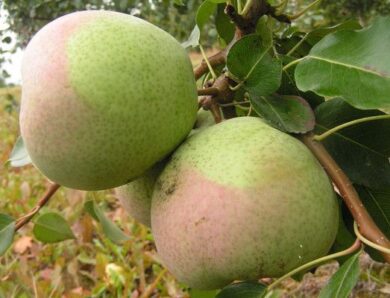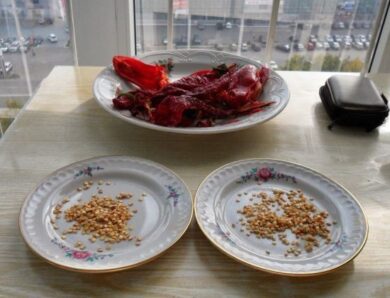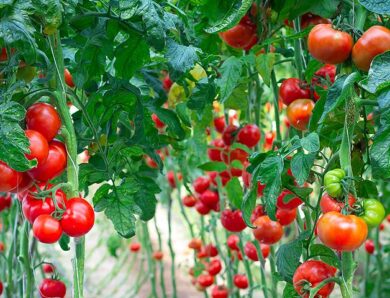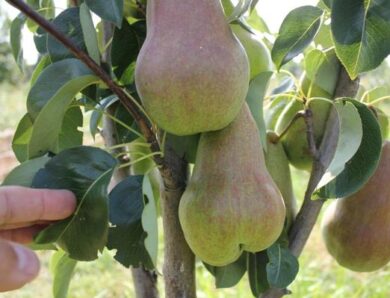Jalapeno peppers: whether it can be grown at home?
Jalapeno pepper is valued for its strong burning taste, which is often needed for different dishes. Since this type of pepper belongs to the most common genus of chili, amateur gardeners try to grow it at home. In our article we will tell you more about this variety of plant, what diseases and pests usually affect the crop.
Description
Now it is quite difficult to imagine popular Mexican dishes, wherever hot pepper was added. It is this ingredient that gives them a special spiciness. Jalapeno is one of the world famous varieties of chili peppers, however, Mexicans are more likely to eat it, not burning red. Unbelievable, but some chefs in our country do not even know about the existence of Jalapeno. But in his homeland he is very popular.
Jalapeno peppers have very burning enzymes, which can greatly irritate the skin during the harvest. For this reason, it is collected in special protective gloves, to protect the skin from unpleasant burns.
There are many varieties of Jalapeno peppers. They may differ in the area of cultivation, appearance, shade of color, the aroma of odors and the degree of sharpness of the fruit.
Among the most common types of culture are the following three varieties:
- Espinaltico - pods with sharp tips;
- Peludo - peppers are thick and quite long;
- Morita - short pods and rounded.
Despite, that Jalapeno itself belongs to the genus Chili, it is not so sharp, which allows you to use it in more dishes. It is quite suitable for those, who tries to avoid too much sharpness in food.
Since Jalapeno is not particularly capricious, then it can be grown at home - in the open ground on the site, in a pot on the windowsill. It grows quite fast. A characteristic feature of the variety is the formation of tall strong shrubs. On each bush on average ripens about 30 fruits. Each pepper has a mass of up to 50 grams, diameter - to 3 centimeters, length - up to 8 centimeters.
Preferably this type of pepper is harvested, when it is green. When fully ripe, the fruits turn dark red. Inside each fruit you can find many seeds for planting next season.
Fruits, which when ripe turn red, considered lower quality. They can be dried, bake or bury in the ground. Chipotle is also prepared from it (mexican variety of condiments).
Like most types of pepper, Jalapeno contains a large number of vitamins, rich in sodium and potassium. It also contains trace elements necessary for the human body - iron, manganese, magnesium, calcium, zinc and even selenium. It contains essential oils, vegetable sugar, linoleic acid, carotenoids, havicin, capsorbine.
Regular consumption of jalapeno peppers improves vision (vitamin A). You can also get rid of insomnia, depression, decline of forces, stabilize the cardiovascular system, normalize blood sugar levels, strengthen the walls of blood vessels, improve skin and hair properties.
Despite the small amount of vegetables consumed, it still benefits and has a positive effect on health.
Agricultural machinery
Jalapeno's cultivation techniques are simple. Pepper grows well in almost any climate.
Mostly seeds for planting are bought in specialty stores. In the future, they can be taken from the harvest.
Before planting, you need to soak the seeds in a solution of manganese, to decontaminate planting material. After that, they are laid out on wet cotton wool in place, where direct sunlight will not penetrate. Then you need to cover with gauze and wait until 3 days. This will keep the seeds in the greenhouse. You should also remember, that it is impossible to allow drying of cotton wool, and moisturize it if necessary.
Planting peppers is carried out in the spring. Jalapeno is grown from 50 to 75 days. Soil can be purchased immediately in the store. The type of soil for flower and vegetable crops will be the most suitable. For normal growth of this culture is required, to have minerals and vitamins on earth.
If gardeners do not have the ability or desire to buy soil, then the land on your site will need to be prepared. This requires prior preparation of the landing site. You need to take the land, soil, humus, peat, sand and mix them in a separate container. Then you can add a little wood ash. After mixing, the prepared soil is poured into boxes for seedlings.
Sowing of seeds is done at a shallow depth, enough 1 div. Then the soil is watered with a sprayer, rather than a direct jet. If you sow pepper seeds deep and pour a lot of water, they will perish in the earth.
Jalapeno loves heat, therefore it must be protected from the wind, drafts and cold weather. Growing this hot pepper, it is better to plant in greenhouses. Since the optimum temperature for its growth will be 25-30 degrees, then such conditions should be created, to make it easy to maintain. in addition, this plant is perennial and should be preserved for the winter. To do this in the winter in the greenhouse you need to keep the temperature at least 12 degrees.
It is desirable not in the early stages of growth to cover the soil with film. With proper care of the culture at home in the near future after planting it in the ground you can see the flowering. It lasts on average until mid or late August.
Feeding of plants can be carried out 3-4 times for the whole season. The manure of herbivores is suitable for this purpose, bird droppings, wood ash. You can also use ready-mixes from stores, example, Stimulus.
Peppers should be watered regularly and often. If the ground dries out, then flowering will begin to fall, which will significantly reduce the future harvest. Keep an eye on that, that the earth was moist, since the peculiarity of the variety is that, that it requires more water during growth, than any other pepper.
Harvesting can begin before the fruit is fully ripe, because time affects the taste of vegetables. You need to harvest in gloves.
Pests and diseases
Because Jalapeno has burning enzymes, it is almost invulnerable to insects and other pests. Spider mites can appear at home, but to remove it, simply wipe the leaves with damp cotton wool, washing away all signs of pest activity.
If you meet all the conditions for the care of peppers, then he will not be sick. It will also be important to remove all sources of infection, if an infection was detected in the greenhouse, which affects other cultures.
Video "Jalapeno - supereda"
In this video you will learn new information about the properties of Jalapeno peppers.




